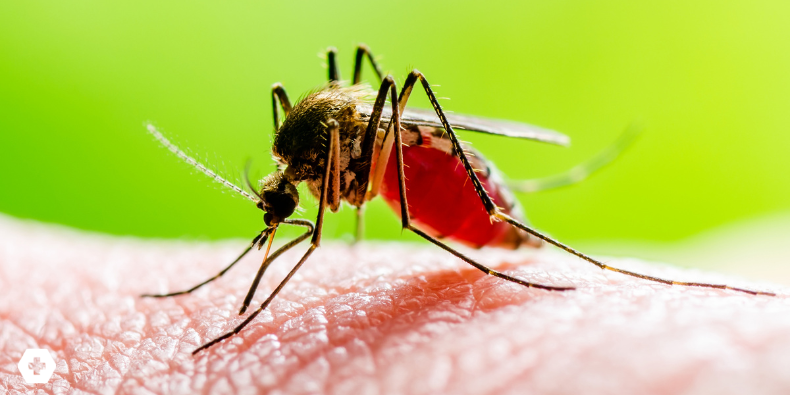
“It Hit Me After the Trip”: Recognizing Chikungunya in Clinical Practice

“It all started a few days after I got back from my trip.”
If you work in primary care, urgent care, or the ED, you’ve likely heard this line before—and your diagnostic wheels start turning. Was it food? A virus? Something exotic? One possible culprit: the chikungunya virus, a mosquito-borne virus that rarely kills but can leave patients aching, exhausted, and out of commission for weeks.
What is Chikungunya Virus?
The word chikungunya comes from the Makonde language of southern Tanzania and means “that which bends up”—a vivid reference to the stooped posture of those suffering from its hallmark joint pain.
Chikungunya is a viral illness spread by Aedes mosquitoes (A. albopictus and A. aegypti), the same species responsible for dengue and Zika. Though it originated in Central Africa, it’s now a seasoned traveler, with outbreaks reported across Asia, the Americas, and Europe (yes, even France and Italy).
Who Gets It?
Anyone bitten by an infected mosquito in an endemic area. In the U.S., we’re most likely to see it in travelers returning from Central or South America, Southeast Asia, the Caribbean, or parts of Africa. And since chikungunya and dengue often circulate in the same regions, geography alone won’t help you tell them apart.
When to Suspect It
Timing is everything. Chikungunya symptoms usually appear within 3–7 days after infection. If your patient presents with fever, headache, rash, and, most notably, joint pain within a week of returning from travel to an endemic region, chikungunya should be high on your differential.
If fever appears more than 10 days post-travel? It’s unlikely to be chikungunya (or dengue).\
Chikungunya vs Dengue: The Great Mimics
Clinically, these two viruses are hard to tell apart at first glance. Both can show up with:
-
Sudden high fever (>39°C [102°F])
-
Headache
-
Myalgias
-
Rash
-
Arthralgias, typically bilateral, symmetric, and involving multiple joints
But then they diverge:
-
Dengue can escalate into hemorrhagic complications during a dangerous second phase. Anyone who looks sick, is dehydrated, or has coagulopathy on labs needs hospitalization—and a consult with Infectious Disease.
-
Chikungunya, on the other hand, tends to leave behind a legacy of joint pain. Patients may recover from the acute illness only to be stuck in months (or more) of arthritis-like symptoms. Until you’ve ruled out dengue, manage supportively and steer clear of NSAIDs.
What to Order and When
Because chikungunya and dengue look so similar, testing for both is essential—and the earlier the better. Which test to order depends on the timing of symptoms. For example, chikungunya virus disease can be diagnosed by nucleic acid testing during the acute phase of the illness, or by serologic testing after the first week of symptoms. Need help sorting it out? Your local or state health department can guide testing and public health reporting.
Treatment: Supportive, but Essential
There’s no antiviral treatment for chikungunya, but that doesn’t mean it’s benign. This virus can rob patients of quality of life. Acute care includes:
-
Rest and fluids
-
Analgesics and antipyretics (acetaminophen is preferred until dengue is ruled out)
Long-term joint symptoms are common. Some patients need months of NSAIDs, physical therapy, or even rheumatology input to manage post-viral arthritis.
Prevention: It’s All About the Mosquitoes
The best defense? Don’t get bitten in the first place. Patients traveling to endemic areas should:
-
Use EPA-registered insect repellent
-
Wear long sleeves and pants
-
Stay indoors during peak mosquito hours
-
Sleep with screens or mosquito nets
Two vaccines (IXCHIQ and VIMKUNYA) have been FDA-approved but are currently limited to select groups, like lab workers or travelers heading into outbreak zones. Use the CDC’s chikungunya vaccine decision tree to help guide recommendations for travelers.
The Bottom Line
With a little travel history, a high index of suspicion, and a few smart testing choices, you can catch chikungunya early and support your patients through both the acute phase and the possible long tail of joint pain.
So next time you hear, “It all started after my trip,” pause before you chalk it up to jet lag or a traveler's bug. Chikungunya might be on the list—and now, you’ll know exactly what to do.
Practice-Changing Education
Experience education that goes beyond theory. Explore Hippo Education’s offerings below.






